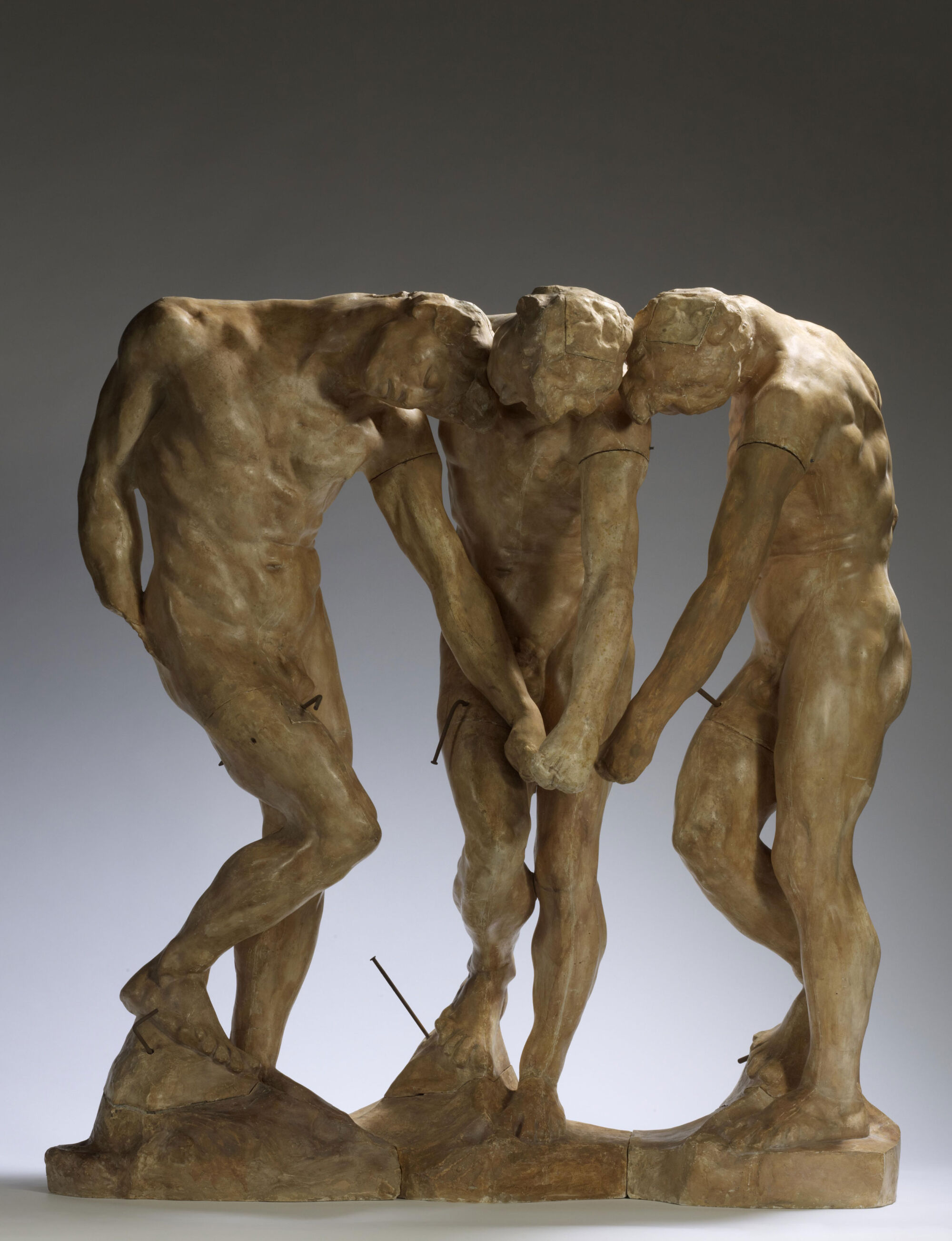This major new exhibition looks at Rodin’s use of clay and plaster, particularly in capturing movement, light and volume. It also spotlights the complex dynamics of the workshop and Rodin’s relationships with his models and collaborators, including his ill-fated lover and fellow sculptor Camille Claudel.
The Making of Rodin takes its cue from the artist’s landmark exhibition at the Pavillon de l’Alma in 1900, where he exhibited his life’s work almost entirely in plaster. Many of the star exhibits of 1900 such as the monumental casts of Balzac (1898) or The Inner Voice (1896) are now on show at Tate Modern. It’s a feast for the eyes.
On display alongside fragmented body parts, including heads, hands, arms, legs and feet, are preparatory models, archival images, a series of delicate watercolours in which he further experimented with bodily forms, and The Kiss (1900-04), the only marble on show.
Displayed together, Rodin’s ghostly casts reveal the extent of his restless, innovative creativity — and, most importantly, his pioneering vision of the human body for a modern age.










